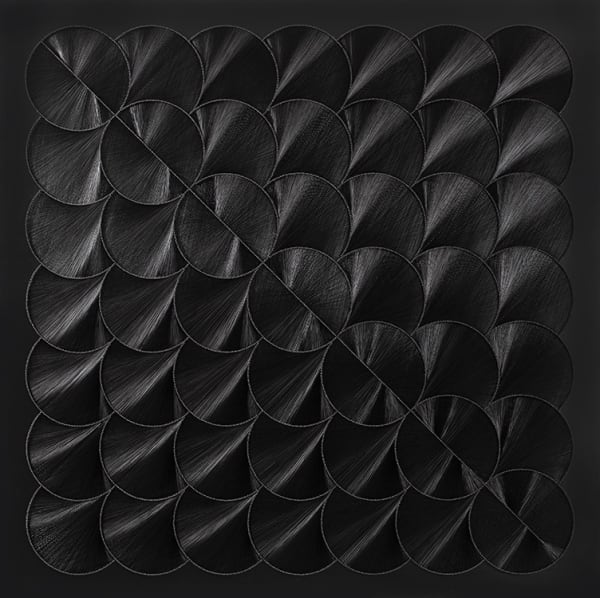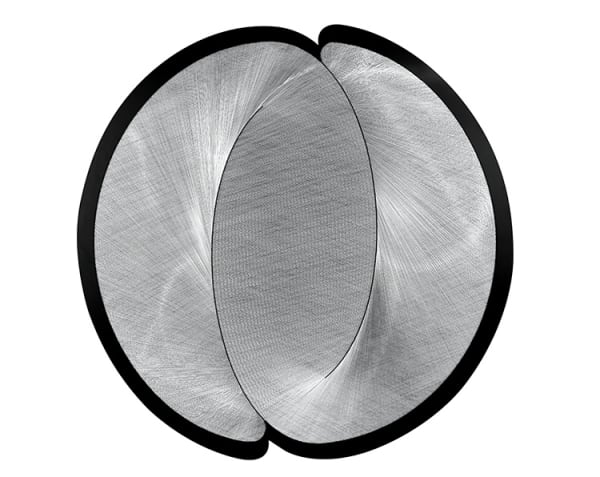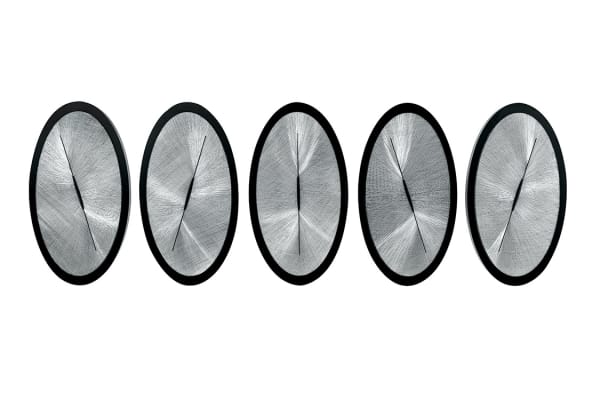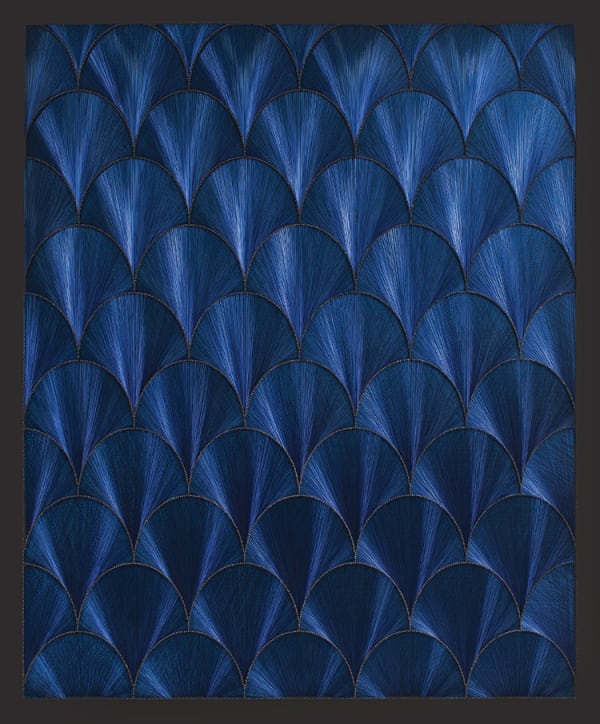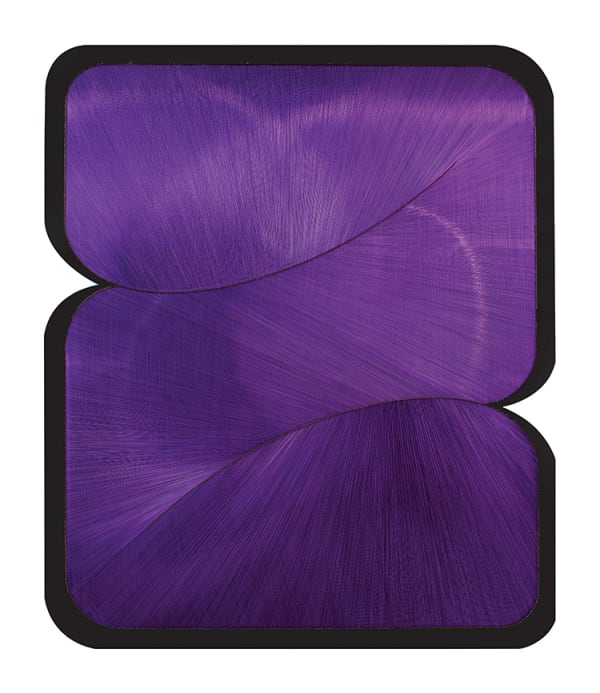Gulay Semercioglu: Walking on Wire
Walking on the Wire is a presentation of new work by Gülay Semercioğlu, a Turkish artist who plays with our perceptions of light, perspective, depth and colour. Walking on the Wire presents a series of new pieces that exemplify the more sculptural aspects of her recent work. During the exhibition the gallery's lights will be dimmed and its walls and floor changed to a near-black hue, creating a dark and shadowy space in which spotlights will illuminate how Semercioğlu's glossy, satin surfaces draw light in, bending and refracting it.
Semercioğlu's signature style involves carefully looping kilometers of thin, coloured, enamel coated silver wire around a series of small screws that have been precisely laid out across a firm wooden backing frame. This filament, only slightly thicker than a human hair, is repeatedly interwoven and overlapped and then pulled taut, resulting in a rigid metallic mesh.
Semercioğlu creates a conceptual template, in the form of a pre-planned looping and weaving process, and by working within the confines of this system, she restricts the subjective decisions at her disposal within the creative process. Her practice tests and plays with the freedoms and constraints of this self-imposed system, without letting it undermine her artwork's visual strength.
The thinness of the wire and the density of the overlapping layers mean that from a distance the surfaces appear like shimmering, glossy blocks of smooth colour, while up close the viewer witnesses fluctuating tonal modulations as light is reflected and refracted from each individual strand. The artworks occupy a middle ground between the austere rationalism of its manual creation process while retaining a lyricism and colourful vibrancy.
The layout of the screws on which the wire is weaved define lines that run through the picture plane and separate Semercioğlu's frames into a series of simple motifs. Sometimes these constituent shapes all share a single colour, while in other instances they consist of a range in a complimentary palette. Theses motifs are influenced by a range of subjects, with the artist currently using a more organic aesthetic, taking subjects from nature such as leafs, fish scales, flowers and water. Yet, in each case, the underlying subject matter is never explicit, only hinted at.
The self-evidently repetitious and labour intensive nature of each work's creation imbues it with a figurative element other than the subject matter. What is being figured is the artist's activity. The viewer can almost see Semercioğlu's leaning over her work as she completes her obsessive task, the image slowly and incrementally appearing where otherwise there would be nothing. Each piece is a record of its own making; an analogue of livid experience. By containing a sense of the history of this private performance very visibly on their surface, the finished work evokes the absent event that has taken place to create it.
Semercioğlu started her artistic career as a painter, and while the canvas has now been replaced with rigid, wooden frames and paint replaced with carefully spun wire, her practice remains indebted to that medium. "My whole struggle is with light and how I can control it - the same issue painters have faced throughout the history of art," she says. "Whatever it is that a painter seeks to do in his or her work, I am trying to do the same with wire, with the same emotion." Her deft manipulation of her signature material creates patterns and textures that mimic an abstract painter's brush strokes and her non-figurative, non-referential, and non-narrative artworks that balance colour, space, shape, and surface are reminiscent of finely executed abstract and colour field paintings.
Yet simultaneously they have a distinctly sculptural dimension due to their reliance on complex and interdependent configurations where the inner structure supports the outside form. They also stimulate a viewing experience reminiscent of that of sculptural work as the viewer is, with an almost compulsive urge, drawn to follow the wires' path by scanning from one direction to the other, to move back so they can grasp some form of totality and move closer to inspect the varying layers. As well as this, they invite touch, their fine threads tempting dexterous viewers to play them like an unturned harp.

